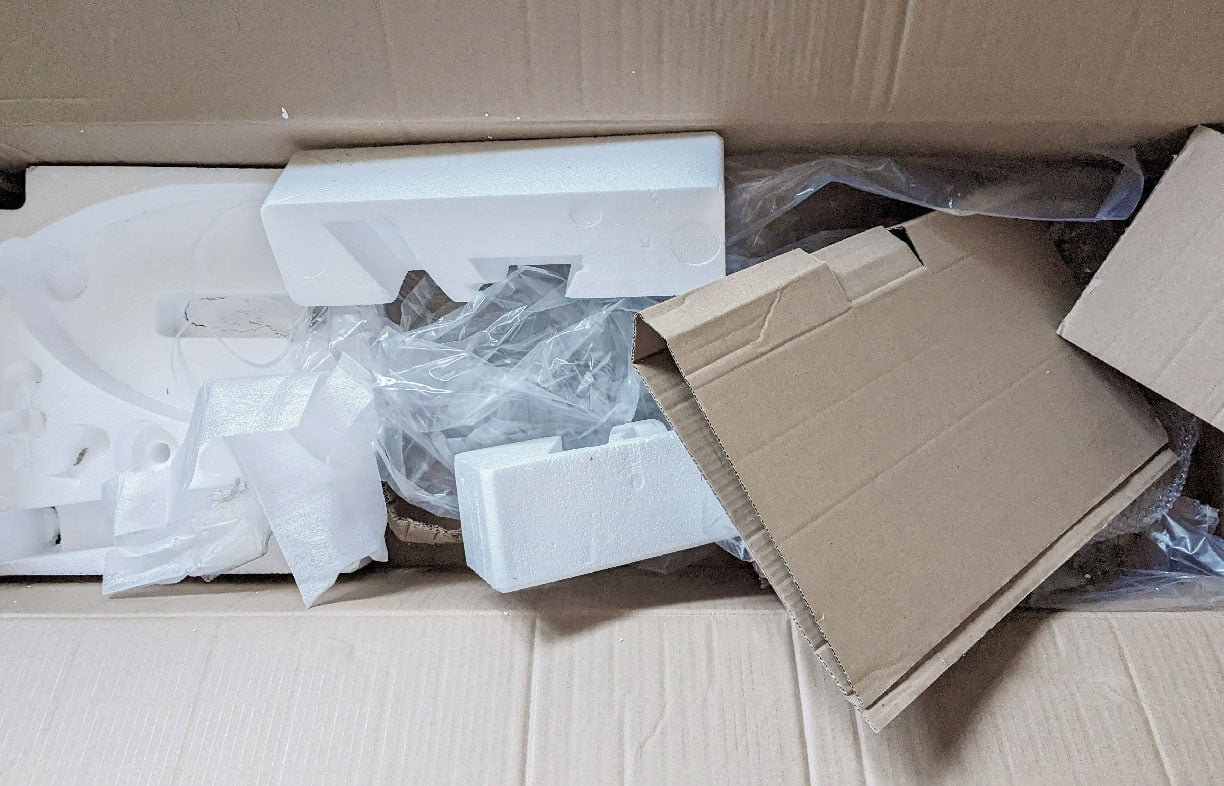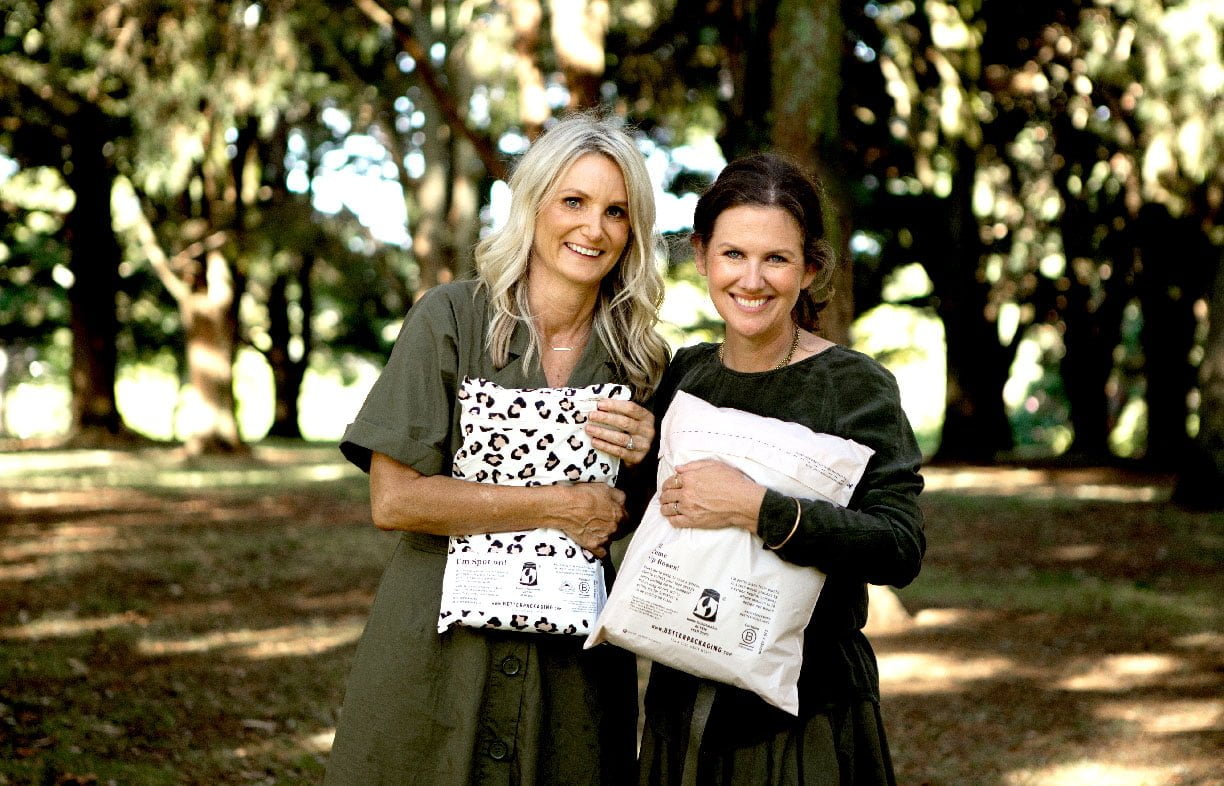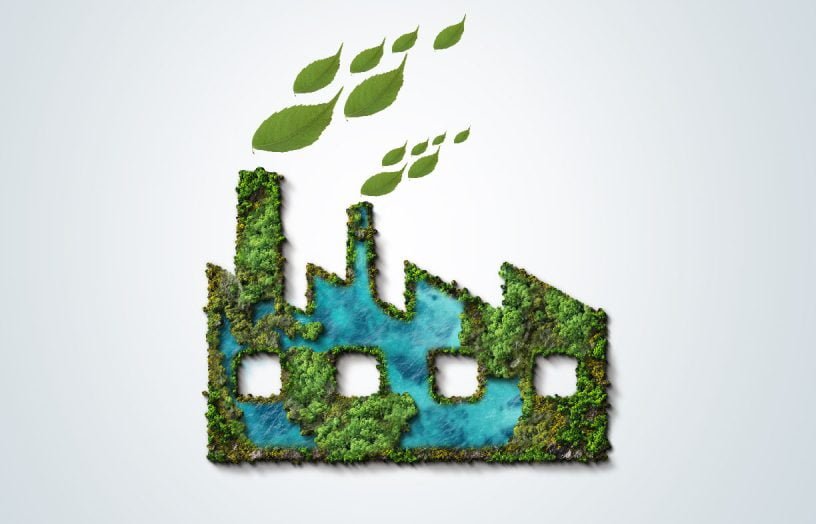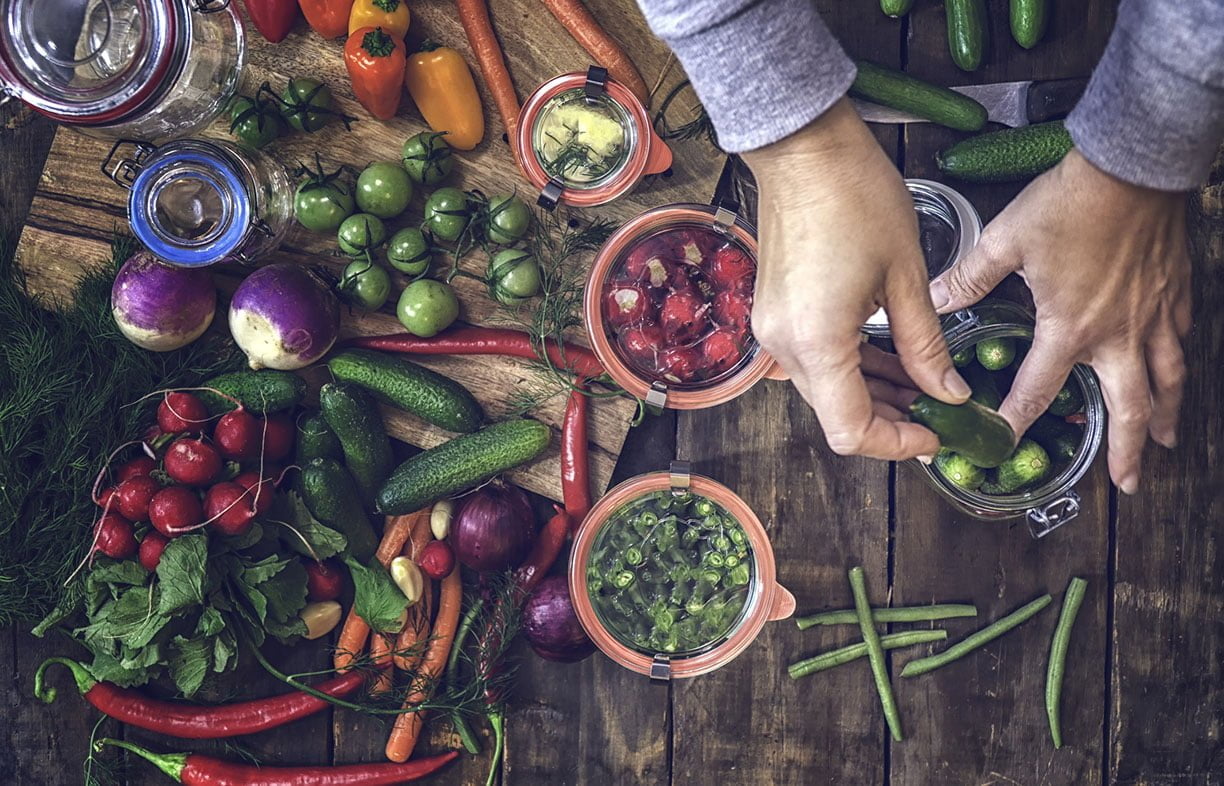The future of packaging

Packaging comes with just about everything we consume, with far-reaching implications for us and the planet. Jane Hone asks how we can get a handle on it.
Speak to a waste reduction expert and the first thing they’ll tell you is that packaging is a symptom of a much larger issue: our general consumption. In other words, it’s the visible component of our consumerist culture; the tip of the iceberg.
The second thing they’ll tell you is that packaging can play an essential role in preventing waste.
The third is that recycling is important—but not the be-all and end-all of waste reduction.
Of course, packaging itself is a serious environmental problem. Since it was invented, the amount of plastic in circulation has increased to saturation point. Only 9% of plastic produced is recycled globally, and we’re manufacturing new (or ‘virgin’) plastic every day—a process that involves using petroleum.
Eight million tonnes of plastic (the equivalent of one garbage truck per minute) ends up in our oceans and waterways each year, where it threatens marine wildlife and disintegrates into toxic microparticles (which then wind up in our food and drinking water).
The main issue with the high volume of packaging in the world is that the bulk of it can’t be broken down—once it’s manufactured, it’s here to stay—and that it escapes into the environment.
Technically, everything will biodegrade at some point given the right conditions (even if it takes hundreds of years), but this doesn’t mean it will degrade into organic matter, or that it won’t release greenhouse gases in the process. Hence, many products labelled “compostable” or “biodegradable” are the result of greenwashing.
This is why Robert Lilienfeld, executive director of sustainable packaging think tank SPRING, says that the key message when it comes to packaging waste is the same as it was 30 years ago: ‘Reduce, reuse, recycle.’
“The concept of ‘reduce’ is always the best opportunity because if you don’t use something you don’t have to figure out what to do with it after the fact,” Robert says.
The obstacle to reducing, he explains, is the monumental challenge of changing our cultural behaviour. And, with so much packaging already produced, reusing and recycling are an essential part of the equation. Both processes are focused on ensuring the materials stay in circulation—or, as Robert puts it, “keeping the molecule in play”.
The more packaging we can divert from landfill or the environment, the less resources (oil, water, trees) need to be tapped to create new packaging. This is one meaning of the term ‘circular economy’, which stands in contrast to the linear ‘take-make-waste’ model that often characterises modern culture.
Recycling has its flaws—it’s expensive, and it still uses a fair amount of energy (around two-thirds of the energy that manufacturing does). And we don’t do enough of it: according to Mike Ritchie, managing director at MRA Consulting Group, we only recycle around 16% of all plastic and 18% of plastic packaging in Australia.
Our national recycling rate overall is 60% (the target is 80% by 2030). Mike believes part of the problem is that landfill is too cheap. He says we’re getting better, though: since Australia has had to stop exporting our recycling overseas, we’ve started building more local reprocessing facilities.
In some cases, recycling efforts fail because packaging is contaminated by food or non-recyclable items; other times, packaging doesn’t make it into the recycling system because it’s littered instead.
Recycling also can’t be practised ad infinitum: eventually, plastic or organics-based packaging degrades to the point where it loses its integrity and can’t be recycled anymore, meaning we currently still have a need for virgin plastic. For this reason, it makes more environmental sense to use recycled content in new packaging than to create recyclable packaging out of virgin plastic.
When done properly, recycling is preferable to tossing the material aside after one use (another reason why labelling packaging as “biodegradable” isn’t necessarily helpful, because the item then exits the circle) and it’s certainly better than packaging piling up in the environment.
Kate Bezar, co-founder of Better Packaging Co., which produces earth-friendly packaging solutions for businesses, is a big advocate for considering the entire life cycle of product packaging.
The company has been experimenting with different virgin plastic alternatives ever since Kate and her co-founder, Rebecca Percasky noticed the volume of waste being produced by e-commerce when the industry emerged years ago (in 2019, e-commerce accounted for over one billion kilograms of packaging waste).

One of Better Packaging Co.’s solutions is their ØPACK range, which can’t be recycled but which focuses on reducing impact at the manufacturing stage by utilising waste materials and solar power and refraining from using water and bleach.
The business also sells bamboo products, which Kate heralds as a kind of “super fibre” thanks to its versatility and regenerative prospects (bamboo plants don’t need to be killed when harvested like trees do) and the carbon sequestering capacity of bamboo plantations (this is why Project Drawdown has named bamboo cultivation among its key recommendations in the fight against climate change).
Better Packaging Co.’s latest range, POLLAST!C, is made from ocean-bound plastic collected from Southeast Asian countries that don’t have plastic waste management infrastructure in place.
This product could be recycled with soft plastics until REDCycle’s collapse, but Kate makes the point that recycled plastic in landfill is better than virgin plastic in the ocean. Using ocean-bound fights the packaging issue on two fronts: it reduces plastic pollution in the environment, and it reduces the need for new plastic.
In the United Kingdom, the government introduced a tax last year on the use of virgin plastics, which are otherwise cheaper for businesses to use than recycled.
At the moment, there are no legal incentives for businesses in Australia to use recycled content in their packaging, or to consider the life cycle of what they produce. Kate would like to see more government regulation of packaging materials and targets for incorporating recycled content in Australia.
“Voluntary arrangements can only take us so far,” Mike says. “The problem is voluntary arrangements allow free-riders to out compete the companies that are doing the right thing by bearing the higher costs of using recycled content.
“There are a plethora of laws in Australia about product safety, chemical content and design… But there’s not a single rule anywhere in Australia—at either federal or state jurisdiction—for the end of life reuse or recycling of a product. End of life disposal, end of life reuse, end of life management. Not one. Now, that’s the problem. Companies should be required to consider the end of life fate of their products.”
Mike imagines a system where it’s mandatory for companies to consider the end of life plan for their products and packaging, where consumers are made aware of whether the fate of the items is landfill or recycling so they can make better informed decisions, and where companies that focus on recycling or reuse outcomes are rewarded.
He says the “end game” is for businesses to be obligated to contribute to a recycling fund to help offset the high cost of recycling.
Along with other initiatives, the Australian Packaging Covenant Organisation (APCO) is one body working to create greater transparency among businesses. Their Australian Recycling Label (ARL) is intended to demystify the recycling process for consumers and lead to more consistent labelling. Businesses can choose to join the scheme if they wish.
In terms of the future of plastic, the experts say we’re not about to see the end of plastic packaging anytime soon. For one thing, the world is far more globalised than it was prior to mass plastic production, and worldwide commerce is here to stay.
Plus, somewhat paradoxically, plastic packaging plays a crucial role in reducing waste.
“Something I’ve sort of come to grips with … over the last couple of years is that packaging actually does perform a really important function,” Kate says. “Packaging is there to protect the contents of whatever is inside from damage, from spoiling, from being wasted. So packaging is often the villain … but it’s actually kind of the hero.”
Kate adds that if we’re going to replace plastic with a sustainable alternative, the alternative needs to perform just as well. In certain areas, such as medical settings, where sterility is essential, we’re yet to find such an alternative.
However, Mike points out that there are plenty of current applications where single use plastics could be replaced with reusable or recyclable alternatives.
One of his biggest bugbears is the use of formed polystyrene to package products such as TVs, microwaves and computers, which could be easily packaged in 100% formed cardboard pulp instead. (To this end, the Ellen MacArthur Foundation recommends the first step in revising the problem is to eliminate unnecessary packaging; the second step is to innovate packaging design.)
And while compostability in packaging can be a grey area, Robert says that it makes the most sense in industrial food settings—think fast food restaurants, events and markets—where it’s more energy efficient to compost used food receptacles together than to clean food from packaging and transport it to a recycling plant.
There are several Australian businesses trying to change the landscape with regards to packaging waste. Replas has been recycling plastic into bench seats, fencing, signs and other objects since 1991. Green My Plate hires out low-impact reusable plates and bowls for large scale events, and bettercup makes cups for the same purpose.
RePlated makes reusable containers from recycled ocean bound plastic to replace single use takeaway containers. Green Caffeen has created a “swap and go’’ coffee cup system where consumers can take a cup from a participating cafe and return to it another participating cafe when they’re done.
These kinds of closed-loop initiatives are a step in the right direction. Robert, too, has some ideas about how to create systems change when it comes to packaging. Like Mike, he suggests that a tax on landfill would encourage businesses and people to recycle, and he believes a carbon tax on food that truly reflects the item’s carbon cost would encourage conscious consumption.
“Products that were produced from use of fossil fuels, products that break down and produce greenhouse gases when they’re completely finished or used up, those would cost people more,” says Robert. “It would force you to do a far better job of … making sure that the food you buy isn’t wasted.”
And though he admits this sounds a little counterintuitive, Lilienfeld says another tool could be intelligent fridges and packaging, which would help people make better purchasing decisions and alert them to when food is about to spoil (the idea being that less food waste means less packaging waste).
While turning the tide on packaging waste requires systems change at the industrial level, consumers can also play their part. Switching from single use to reusable items and “keeping the molecule in play” helps (whether it’s reusable drink bottles, coffee cups, straws, takeaway containers, shopping bags, bringing your own containers to bulk food stores, or choosing to use an old ice cream bucket as your compost receptacle instead of buying a new compost bin).
Shopping at local brick and mortar stores reduces the need for extra packaging (and the carbon emissions associated with travel); so does seriously considering each purchase.
Checking the labels on packaging to ensure you’re disposing of packaging in the correct way lessens the chance of contamination, and contacting companies to clarify the end-of-life plan for their packaging might just encourage them to reflect on the question more deeply themselves.
Further reading
 Efficient homes
Efficient homes
Building for a changing climate
Are we building homes for the future, or for the past? Rob McLeod investigates how climate change is impacting home energy ratings and the way we build our homes.
Read more Efficient homes
Efficient homes
Gas and our health
Dr Ben Ewald uncovers the health effects of gas in the home.
Read more

